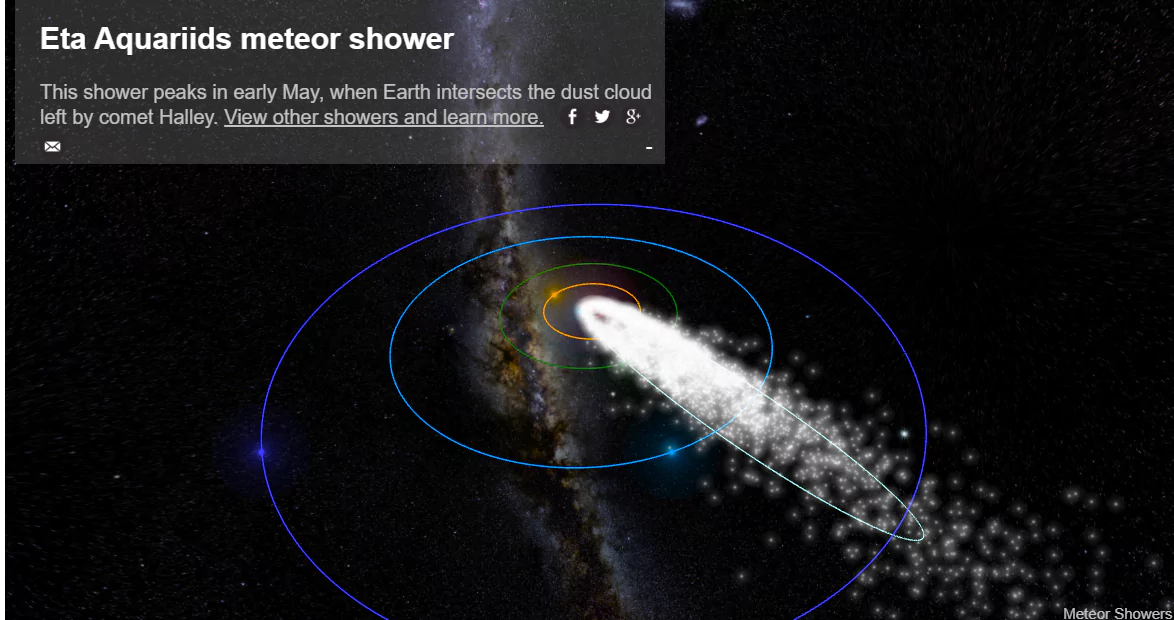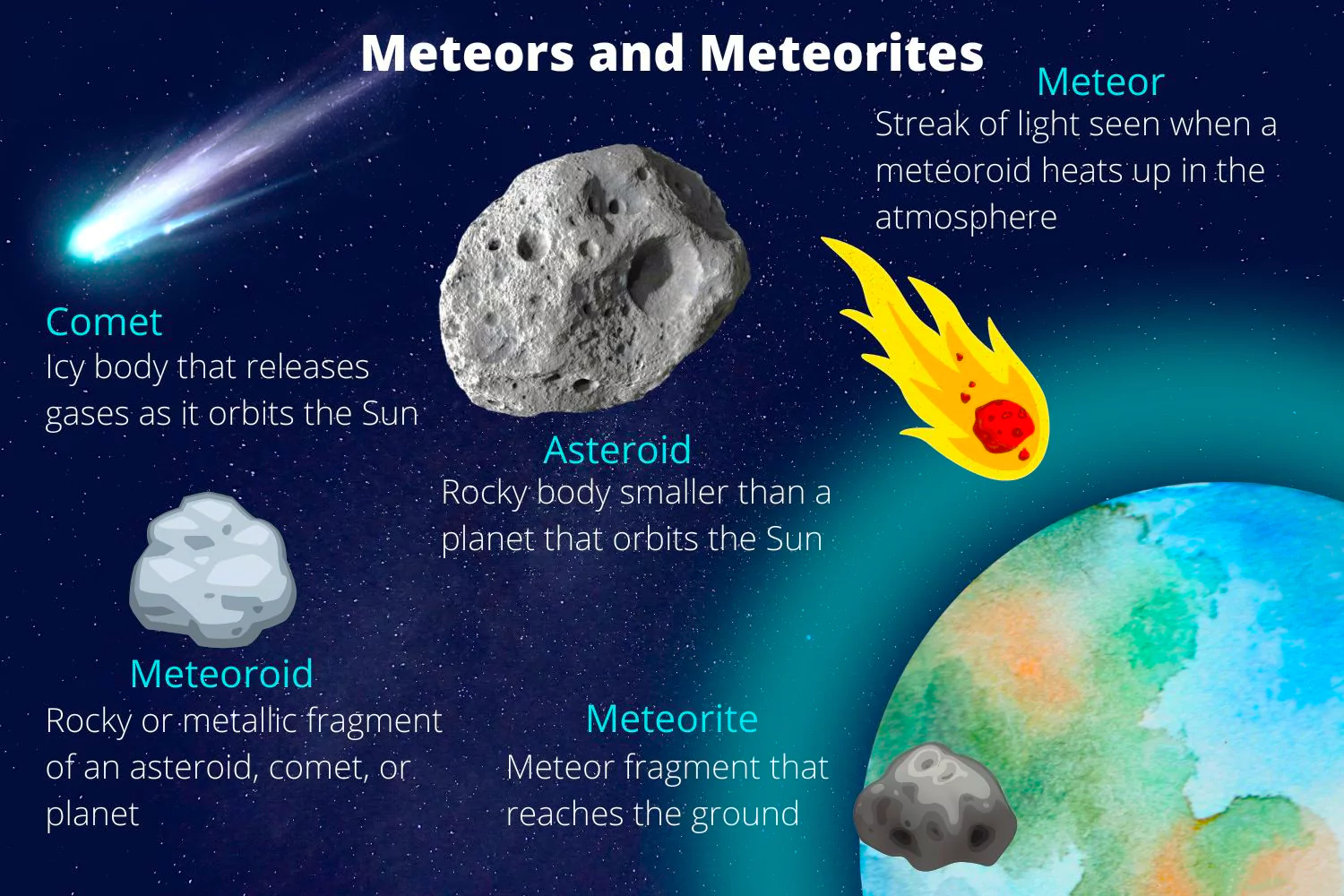Context
The Eta Aquariid meteor shower which has been active since April 15 is about to reach its peak on May 5 and 6.
About Eta Aquariid Meteor Shower

The Eta Aquarid meteor shower is one of two annual showers. It is formed when Earth passes through the orbital path of Halley’s Comet.
- Completion of one orbit of Halley’s orbit: Halley’s Comet orbits the Sun approximately every 76 years, and its debris creates the Eta Aquarids when Earth intersects its orbit.
- Discovery of Halley’s Comet: The periodic nature of the appearances of Halley’s Comet was discovered by astronomer Edmond Halley in 1705.
- Last appearance of Halley’s Comet: Halley’s Comet last appeared in 1986 and is expected to return to the inner solar system in 2061.
- The Orionids meteor shower: This shower occurs in October and is also caused by debris from Halley’s Comet.
Enroll now for UPSC Online Course
-
Characteristics:
- Glowing trails: The Eta Aquariid meteor shower has fast meteors that leave long glowing trails.
- Speed of movement: It moves at speeds of around 66 km per second (2.37 lakh kmph) into Earth’s atmosphere.
-
Duration and Peak Period:
- Time duration in a year: The Eta Aquariid Meteor Shower typically runs from around April 21 to May 12 each year.
- The number of visible meteors remains low until the peak around May 5 or 6.
- Best Visibility location: These showers are best visible to countries such as Indonesia and Australia in the Southern Hemisphere.
- shower’s radiant location: Southern Hemisphere observers have a clearer view of the meteors higher in the sky due to the shower’s radiant location.
- The radiant point of the Eta Aquarid meteors is located within the constellation Aquarius.
- Observers may find it challenging to view due to its proximity to morning twilight.
- In the Northern Hemisphere, Eta Aquarid meteors often appear as “Earthgrazers,” long meteors that seem to skim the Earth’s surface.
What Are Comets?
Comets are icy leftovers from when our solar system formed about 4.6 billion years ago.
- Mixture: They consist of a mixture of dust, rocks, and ice.
- Orbital Characteristics of Comets
- Elliptical orbit: Comets travel around the Sun in highly elliptical orbits.
- Completion of one orbit: Some comets can take hundreds of thousands of years to complete one orbit of the sun.
- Comet Sizes
- Most comets are about 10 kilometers wide.
- As comets get closer to the Sun, they heat up and shoot out gases and dust.
- This can make their heads bigger than planets.
- Formation of Tails
 The released material from comets forms tails that can stretch millions of miles away from the comet.
The released material from comets forms tails that can stretch millions of miles away from the comet.
- These tails are a characteristic feature of comets when they are closer to the Sun.
- Number of Known Comets
- Current comets: NASA has identified 3,910 comets to date.
- However, scientists believe there are billions more comets orbiting beyond Neptune, in regions like the Kuiper Belt and the more distant Oort cloud.
Relationship Between Meteor Showers and Comets
- Meteor showers happen when Earth goes through the dusty trail left by comets in space.
- Visible Streaks: Debris from the comet burns up in Earth’s atmosphere, creating visible streaks.
- These visible streaks are known as meteors or shooting stars.
- This burning also makes a short tail behind the shooting star.
Characteristics of Meteors:
- Meteors: These are tiny bits of dust or rock that burn up when they hit Earth’s atmosphere. Most meteors are really small, like grains of sand, and disappear in the sky.
- Meteorites: Sometimes bigger meteors survive and hit the ground, and then they’re called meteorites.
Enroll now for UPSC Online Classes
Formation of Meteor Showers:
- Meteor showers occur when Earth passes through the orbital plane of a comet, encountering the debris left behind by the comet.
- As Earth moves through this debris field, the sky lights up with small and large meteor tails.
Also Read: Explore The Minor Planets
![]() 4 May 2024
4 May 2024

 The released material from comets forms tails that can stretch millions of miles away from the comet.
The released material from comets forms tails that can stretch millions of miles away from the comet.
